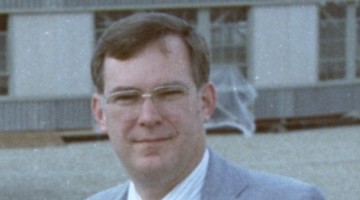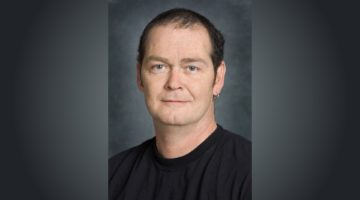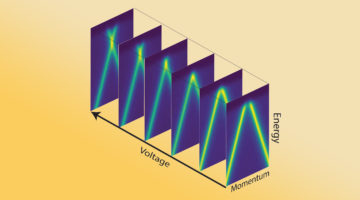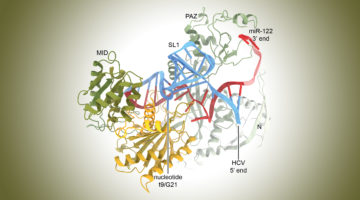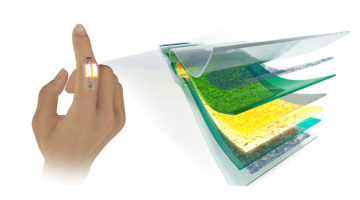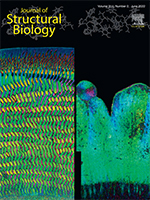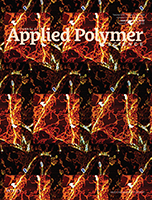Brian Kincaid, the first director of the Advanced Light Source, died on January 1, 2022. The ALS community sends our condolences to his family and honors the many contributions he made to the early years of our facility. Read more »
All News & Updates
In Memoriam: Gideon Jones, Center for X-Ray Optics
Gideon Jones, whose entire LBNL career was spent in CXRO, passed away on Friday, February 11. Our thoughts are with his wife, Anne Dinklage, and their two children. Read more »
What Drives Electron–Hole Asymmetry in Graphene?
Using the ALS, researchers determined that interactions between electrons are what give rise to the divergent effects observed when graphene is doped with electrons versus holes. A better understanding of this electron–hole asymmetry could lead to new avenues for generating exotic material phases, including unconventional superconductivity. Read more »![]()
![]()
Molecular Hijacking of a MicroRNA by the Hepatitis C Virus
The hepatitis C virus (HCV), which attacks the liver, is known to repurpose host-cell components known as microRNAs—short RNA strands that act to silence gene expression. Now, the molecular structure of an HCV site bound to a microRNA complex revealed how their interactions shield the virus from the host cell’s protective response. Read more »
Scientists Uncover Surprising New Clues to Exotic Superconductors’ Superpowers
Researchers studied a model material (CeCoIn5) that mimics a cuprate superconductor that can be switched on and off using high magnetic fields. In chemical compositions where the superconductivity is strongest, the number of free electrons jumps, signifying a transition point. The researchers attributed this transition to the behavior of electrons associated with the cerium atoms. Read more »
A Brighter Future for Stretchable Electronics
By continuously monitoring physiological signals, wearable “stick-on” sensors not only help people stay healthy, they can also provide early warning of potential health problems. At the ALS, researchers studied the morphology of such a sensor’s active material, which is key to controlling and optimizing its structure and performance. Read more »
Enhancing the inherent catalytic activity and stability of TiO2 supported Pt single-atoms at CeOx–TiO2 interfaces
Single atoms with atomically coordinated reaction centers are considered next-generation catalysts. However, there is concern about their thermodynamic vulnerabilities and whether their inherent catalytic nature is superior compared with that of larger nanoparticles. Here, we address the two controversies by a comparative study using two catalysts. Read more »
Biomineralization: Integrating mechanism and evolutionary history
In this review, Gilbert et al. develop a model for calcium carbonate biomineralization applicable to all phyla. Their model may help elucidate the key genetic components that drive biomineralization and offers insight into the consequences of global climate change on marine organisms. Read more »
Loss of biological control of enamel mineralization in amelogenin-phosphorylation-deficient mice
Amelogenin phosphorylation plays crucial roles in controlling structural, crystallographic, mechanical, and compositional characteristics of dental enamel. Thus, loss of amelogenin phosphorylation leads to a reduction in the biological control over the enamel mineralization process. Read more »
Programmable stiffness and stress–relaxation of cross-linked self-assembling peptide hydrogels
An AFM image representing a supramolecular hydrogel based on a cross-linked self-assembling peptide (SAP). Cross-linking allows for precise tuning of biomechanical properties, spanning the range of stiffness values found in the human central nervous system, pancreas, liver, lung, and skin tissues. The findings provide a new strategy helpful for soft tissue regeneration. Read more »
- « Previous Page
- 1
- …
- 39
- 40
- 41
- 42
- 43
- …
- 139
- Next Page »
